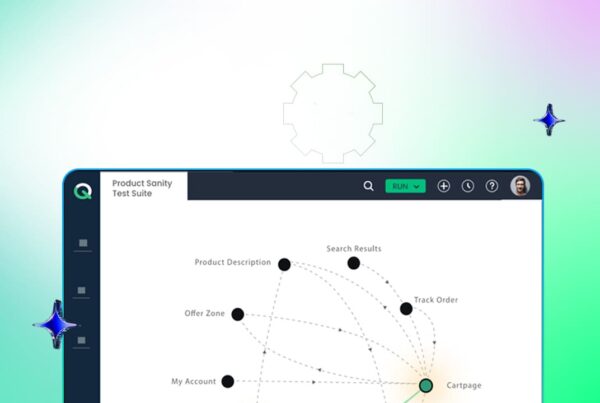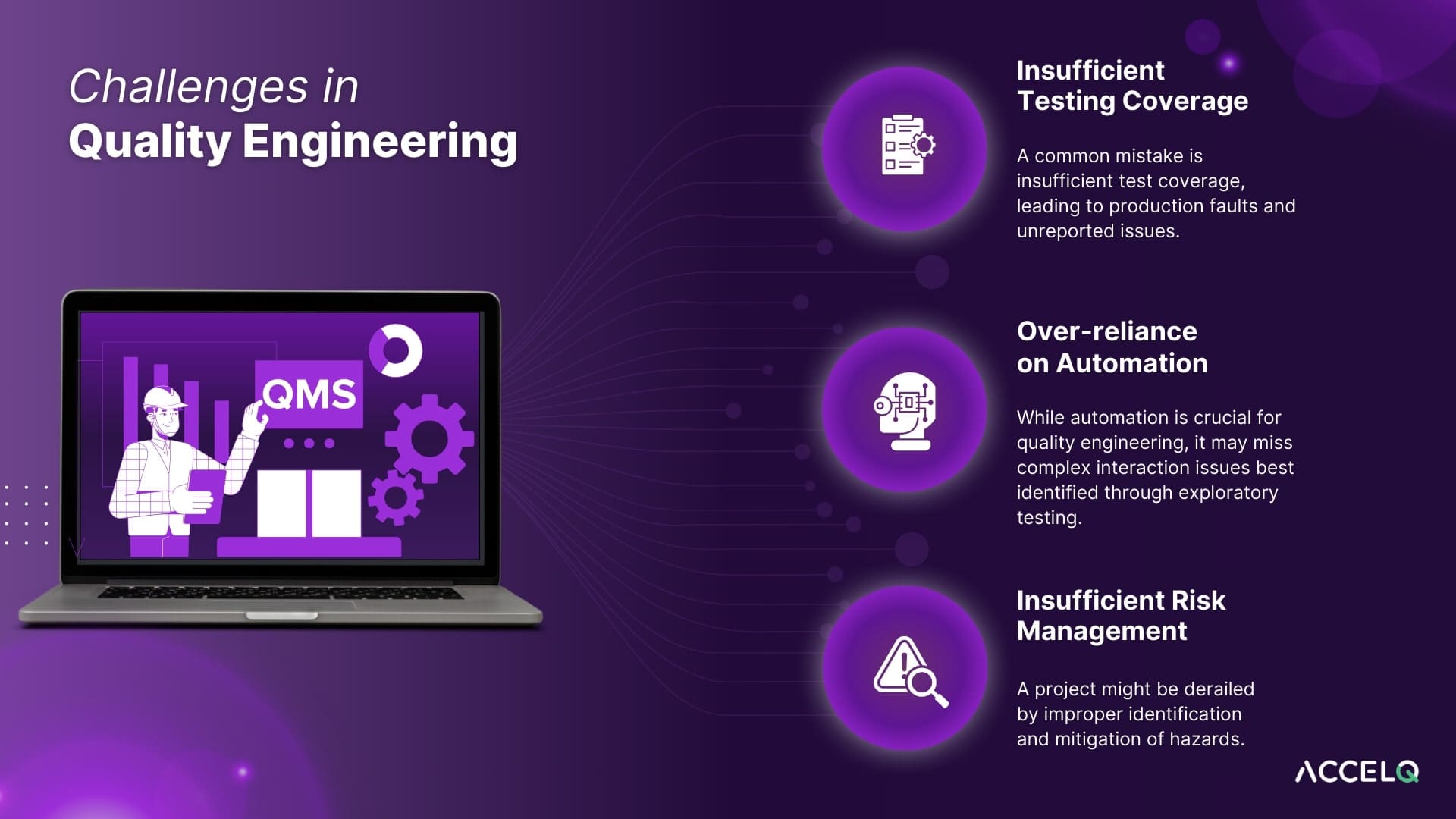Role of Quality Engineering in Automation Testing

As organizations look for methods to match their software testing efforts, quality engineering is being adopted increasingly. Actually, quality engineering has developed from traditional quality assurance to fulfill the needs of today's quick-paced development teams in terms of quality engineering testing. Human testing has also given way to automated solutions with low-code interfaces to expedite quality assurance thanks to quality engineering.
What is Quality Engineering?
Over the whole software development process, quality engineering is regarded as an advanced approach that goes beyond conventional quality assurance methods. This concerns guaranteeing software quality in the design and deployment phases and continuing through maintenance. Proactive engineering procedures combined with QE integrate systematic quality assurance. It controls risks, avoids problems, and guarantees the best software quality and dependability standards.
SUGGESTED READ - Top Trends Driving Quality Engineering
Key Roles in Quality Engineering
Success of a Quality Engineering team depends on a few important roles and their skills for quality engineer :
- Quality Engineers: They are the experts in incorporating quality procedures into the entire software development process.
- Test Automation Engineers: Experts at creating and executing automated test scripts and frameworks to simplify testing procedures are known as test automation engineers.
- Performance Engineers: They ensure the program grows as needed and functions properly under anticipated workloads.
How Can QE Software Quality Be Measured?
Establishing a strong foundation for these metrics with Quality engineering strategy will help organizations to continuously improve their development and testing procedures and produce better results. It takes a careful selection of the KPIs to measure software quality well.
- Defect Density: Usually expressed per thousand lines of code, it counts the amount of flaws in the software in relation to its size.
- Test coverage: It evaluates how much the source code is run during the test suite execution. Fewer production defects are associated with high test coverage.
- Defect Escape Rate: Tracks how many faults make it into production instead of being discovered during testing. More successful testing is shown by a lower escape percentage.
- Mean Time to Detect (MTTD): The typical duration required to identify problems after they have been introduced into the system. An MTTD of less time points to more effective monitoring and testing procedures.
Challenges in Quality Engineering
Quality engineering has its share of difficulties, even if it offers a structure that guarantees high software quality standards. Achieving the intended results and preserving the integrity of the quality engineering process requires efficient handling.
Insufficient Testing Coverage
One of the most frequent mistakes is not having enough test coverage, which can result in production faults and unreported problems. To prevent this, implement thorough test plans that address every important component of the application, including usability, security, performance, and functional testing.
Over-reliance on Automation
While automation is essential to effective quality engineering, it might overlook intricate interaction flaws that are only detectable by hand testing. To be sure all the bases are covered, combine manual testing with automation.
Insufficient Risk Management
A project might be derailed by improper identification and mitigation of hazards. Thorough risk assessments carried out throughout the planning and project lifecycle will improve risk management procedures.
Quality Engineering Vs Quality Assurance
| Aspect | Quality Engineering (QE) | Quality Assurance (QA) |
|---|---|---|
| Focus | Proactive measures to ensure quality throughout the SDLC. | Reactive measures to find defects before software release. |
| Approach | Integrates quality practices from the beginning of development. | Focuses mainly on the testing phase. |
| Goal | Prevent defects and ensure quality in every phase. | Identify defects before they reach the customer. |
| Scope | Holistic, covering all phases of software development. | Typically limited to the testing phases of the lifecycle. |
| Methodology | Continuous integration of quality throughout the development. | Periodic checks and tests to validate the quality of software. |
| Tools Used | Uses a variety of Quality engineer tools , including automation and CI/CD tools. | Primarily uses testing tools. |
| Collaboration | Collaborative, involving cross-functional teams. | Often operates as a separate function within the development team. |
| Outcome | Enhances both product and process quality. | Ensures product meets quality standards before release. |
| Adaptability | Highly adaptable, evolving with project needs. | More rigid, following predefined testing protocols. |
| Skill Set | Requires a broad skill set encompassing development and testing. | More focused on testing and quality control techniques. |
Why Low-Code Matters for Quality Engineers in Automation Testing?
Automation testing increasingly uses low-code platforms, especially to improve Quality Engineering effectiveness and efficiency. They directly affect automation testing, and ACCELQ can help you with that.
Test Development
ACCELQ greatly expedites the creation and implementation of automated tests. This quick turnaround depends on the agility and speed required in contemporary software development cycles.
Better Teamwork
It makes test automation more inclusive by letting team members with and without technical backgrounds participate. By helping close the gap between developers, testers, and business analysts, this testing democratization ensures that automated tests are thorough and in line with corporate needs.
Extensive Test Coverage
This became possible by ease of use and flexibility, even for complicated scenarios that could be difficult to script by hand. Higher quality and dependability of the software under test are guaranteed by this extensive test coverage.
Cost Effective
Starting out, buying a tool can be expensive. Ultimately, though, lowers the resource costs related to automated testing by reducing the requirement for highly technical expertise to create and maintain test scripts. With time, this results in substantial savings because test strategy enhancement takes up more time than script maintenance.
Scalability and Adaptability
ACCELQ is made to be easily scalable to meet project needs and to change with the times. Maintaining automation suite effectiveness in dynamic testing environments requires this scalability.
Using low-code techniques, ACCELQ improves automation testing and offers strong, adaptable, and widely available solutions. This method expedites the process and supports the objective of software development getting faster and of better quality. Get in touch with us and arrange your demo right now.
Suma Ganji
Senior Content Writer
Expertly navigating technical and UX writing, she crafts captivating content that hits the mark every time. With a keen SEO understanding, her work consistently resonates with readers while securing prime online visibility. When the day's work ends, you'll find her immersed in literary escapades in her quaint book house.
Discover More
 How to Get Started with ACCELQ – A Comprehensive Guide
How to Get Started with ACCELQ – A Comprehensive Guide
How to Get Started with ACCELQ – A Comprehensive Guide
 Improving Test Automation Quality Through Code Reviews
Improving Test Automation Quality Through Code Reviews

































